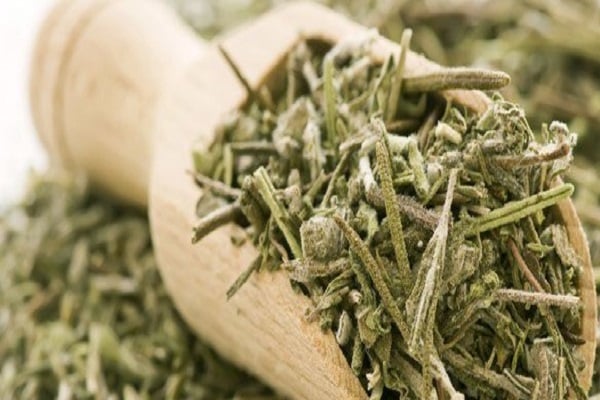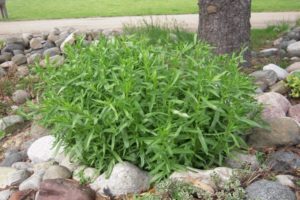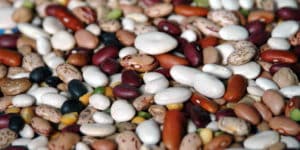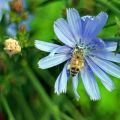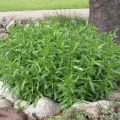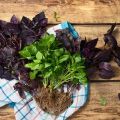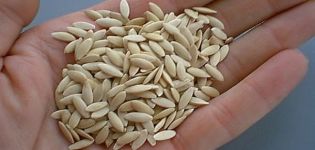Growing marjoram from seeds in the open field, planting and care, how to dry a plant
Since time immemorial, marjoram has been used by humans in the form of a fragrant seasoning that makes dishes more appetizing and healthy. This plant also has healing properties, bringing the nervous system of an overexcited person to a state of balance. Therefore, gardeners constantly grow marjoram from seeds on their plots.
Description of marjoram
Garden marjoram, or Origanum majorana, refers to perennials in the places of its growth, but for industrial purposes it is cultivated as an annual plant. Marjoram grows as a bush, the branches of which reach 30-50 cm in length. The leaves on the twigs are small, only 1-2 cm in diameter, are oval in shape. The flowers of the plant are fleecy, resembling felt.

They form a small bundle and have an elongated, spatulate shape. The marjoram is fruitful in small, round, monocotyledonous "peas". The place of growth of marjoram is the Mediterranean and Asia Minor regions. But today this culture is grown far beyond the borders of its historical homeland.
Most scientists recognize marjoram close to such a plant as oregano (oregano). In view of the existing small similarities, some confusion arises. However, the greyish green marjoram leaves have a much subtle and sweet flavor profile than oregano.
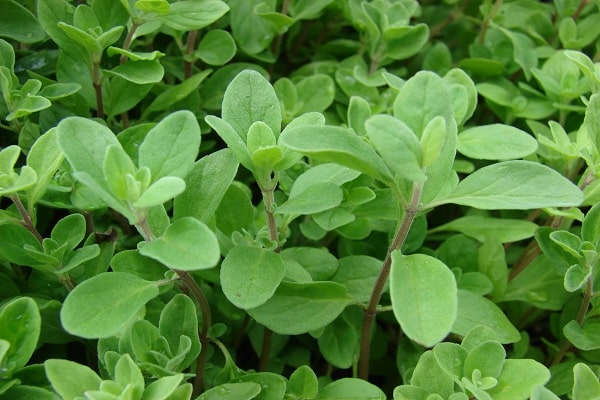
What types and varieties are there?
Now in the agricultural sector, only two types of marjoram are grown on an ongoing basis: multi-leaf and floral. The multi-leaved species is a bush with a large number of densely leafy stems. The flower species, on the other hand, is an underdeveloped growth with a large number of inflorescences.
Gardeners most often use garden marjoram. This species is distinguished by reddish streaks on the stems and silvery-green leaves.
In addition, the following species are also cultivated:
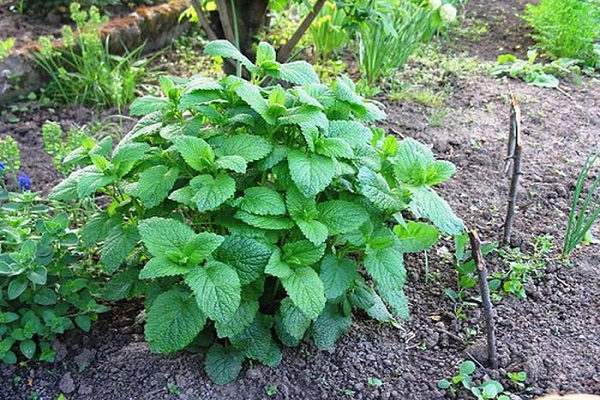
- Gourmet. It is considered the most productive species. The bush is more than half a meter high. A good harvest can be harvested in 120 days.
- Thermos. The stems are about forty centimeters high, differ in silvery color and small leaves.
- Crete. A low bush with velvety bluish leaves. Especially loved for its lemon scent.
- Baikal. The height of an adult plant is 50 centimeters. Forms white buds and small smooth leaf plates.
- Tushinsky Semko. The plant is not very branchy. Trunk with silvery pubescence, woody below. Deciduous plates are oblong, with jagged edges.
- Thermos. Stems are straight, silvery. The leaves are small, pubescent. Blooms in small inflorescences.
- Scandi. Differs in small, smooth, but very fragrant leaves. White flowers are not abundant.
It is advisable to plant marjoram in that part of the garden that is not darkened by trees, walls of buildings, is fully illuminated and heated by the sun in the morning, lunch and evening. In areas with high shade, the plant will not receive proper development - there will be a loss of green foliage and, as a result, a lack of formation of volatile compounds, which are the basis of the aroma and taste of marjoram.

It is preferable to plant marjoram in well-loosened soil, with the addition of lime fluff. Soils with an admixture of sandy loam and clay are suitable, because soil with such a composition is subject to faster heating by the sun's rays.
Note! Marjoram takes root well in areas previously occupied by potato planting.
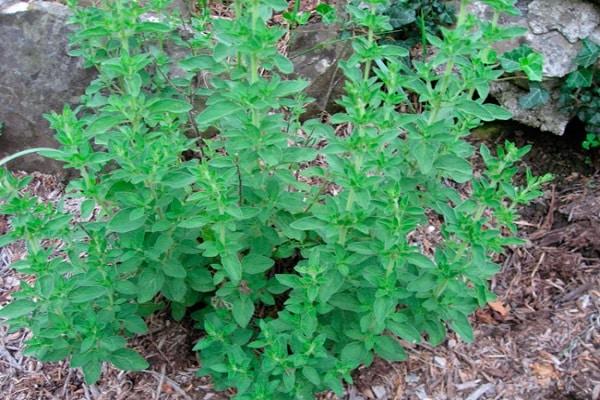
Growing marjoram from seeds
It is not easy to grow this fragrant plant on your site, because in the conditions of our climate, the plant needs to be created comfortable. And for this you need to scrupulously familiarize yourself with the agrotechnical methods of growing marjoram and follow them exactly.
Few people know that marjoram is allowed to grow not only in the open field, but also at home. And it's easy to do. Bushes grow small, but no less aromatic. Caring for them is the same as for all indoor plants.
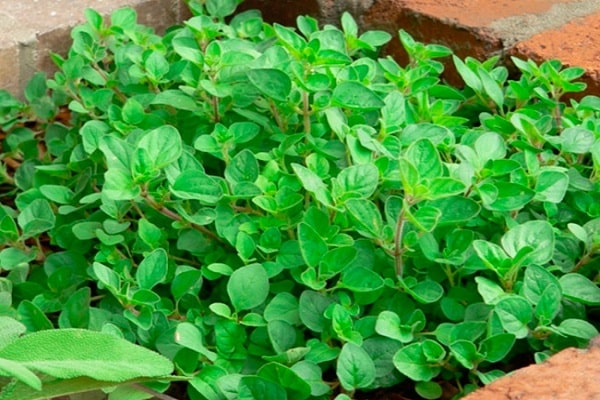
Features of planting marjoram
Young shoots, or seedlings, should be planted in well-moistened soil, flavored with organic matter. Take a sprout, keeping the soil near the root, and plant it in the hole. Next, sprinkle with soil and carry out compaction watering from a watering can under the root.
Planting plants in open ground is carried out within 15-20 cm between themselves. The recommended row spacing is 50 cm. Rooting of the seedlings lasts for a 2-, 3-week period.

Seed sowing time
It is possible to grow marjoram from seeds in open ground only in the south of the country. In all other regions, it is recommended to pre-grow seedlings. To do this, in April, the grains are placed in a special substrate in small containers (you can use plastic cups, having previously made holes in them). Pour a little and cover with foil.
Seedlings will appear in three weeks. The film is removed, and the sprouts, after a pair of real leaves appear, gently dive. They do it in May.

Soil preparation
A prerequisite for soil preparation is two-time loosening and the introduction of organic matter. Rotten manure, compost material is used for this, to which mineral fertilizers, urea and potassium sulfate are added, 20 g each and 30-40 g superphosphate.

Marjoram care rules
In order for a plant to please with abundance and quality, it is necessary to create good conditions for it.
The main rules for obtaining a stable harvest are:
- regular loosening of the soil around the seedlings and row spacing;
- destruction of weeds;
- systematic soil moisture;
- obligatory systemic feeding of seedlings is carried out after their rooting, approximately on the 20th day.
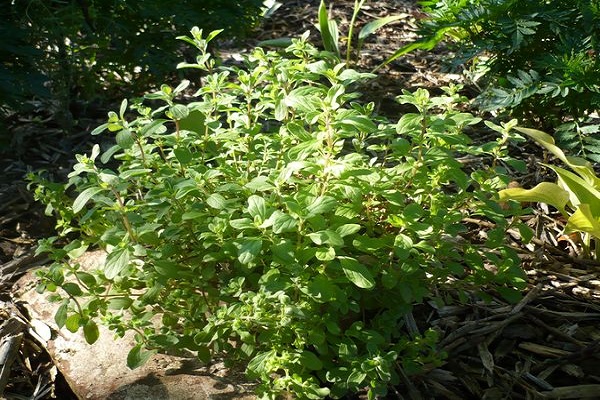
Caring for this plant should begin at the seedling stage. Seedlings are watered as needed, and the soil is periodically loosened slightly. At least ten days before the intended transplantation into open ground, containers with seedlings should be regularly taken out into the street, gradually increasing the exposure to the fresh air.
The amount of irrigation at this time will be less.
Top dressing
When preparing a feeding solution, it is necessary to dilute 15 grams of ammonium nitrate in a bucket of water with a capacity of 10 liters and consume the resulting volume per 1 sq. m landings.In the future, a week later, you need to carry out a second feeding, using for this 10 g of urea, 10 g of potassium salt and 20 g of superphosphate.
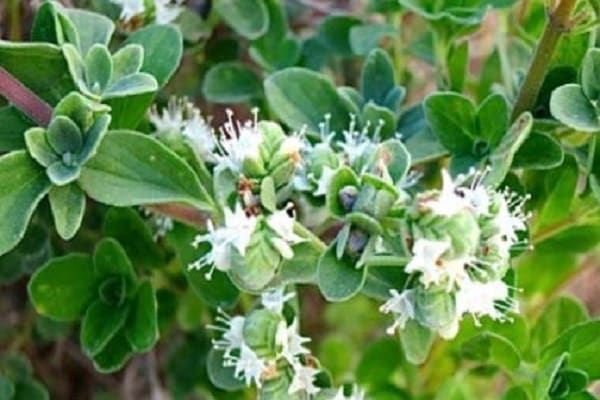
Treatment
It is necessary to process the plant when spots appear on its leaves, and the bush itself stops growing. This indicates the presence of a disease such as Alternaria. This disease appears when the weather is damp for a long time. It can also develop due to thickening of the plantings. The soil under the bushes does not dry out enough and, as a result, alternaria appears. You can deal with it with the help of fungicides.
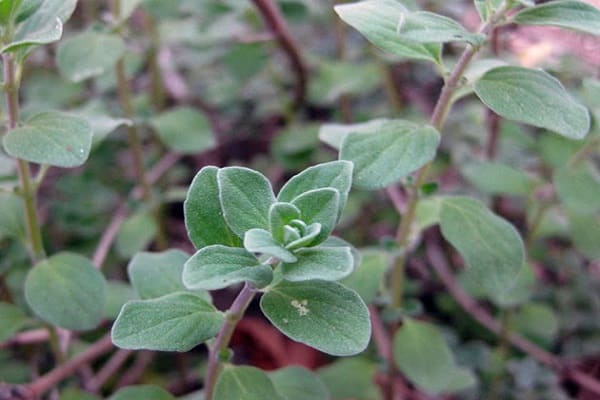
Watering and loosening
Marjoram withstands drought well. It is recommended to water it regularly after planting. In the future, irrigation should be carried out depending on the need. With regards to loosening, then between the rows it must be done several times. This will not only improve the permeability of oxygen and nutrients to the roots, but also prevent thickening by weeds.

How to collect and store marjoram?
The collection of ready-to-use raw materials must be carried out in the second half of the summer during the full blooming of flowers. But again, in a large country, this period can vary. And in the southern regions, before this time, the collection may already end, while to the north it is able to bloom at the end of summer.
When cutting the stems, it is better to use an ordinary, sharpened kitchen knife. The stem is cut at a height of 1.5-2 cm from the ground. For canned use, the stems are cut in small sections.
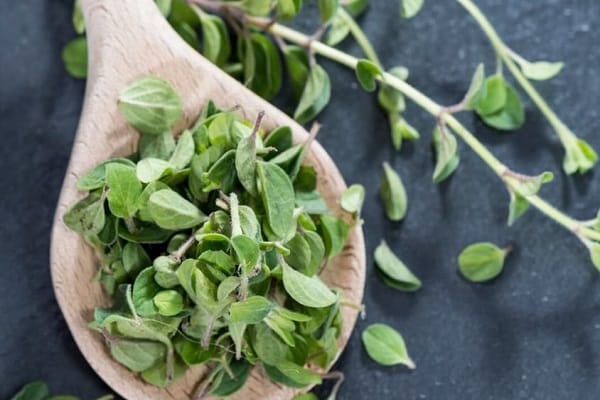
If the raw material is intended for further drying, the entire plot is mowed. Freshly cut stems are placed in well-ventilated rooms, allowed to dry out for a while, after which they are knitted in bundles and placed for further drying in attics, under awnings that create shade.
After the final drying, the marjoram bunches are sorted out, the unnecessary are discarded, the rest is crumbled and placed in jars, closing them with lids, and stored in places with low lighting. Dried raw materials are placed in a tightly sealed container, where they retain their food properties for a long time.
